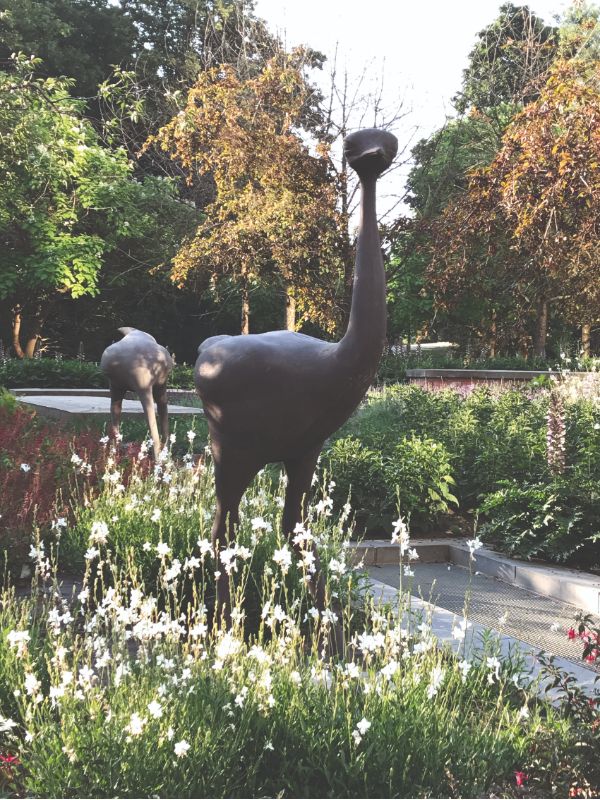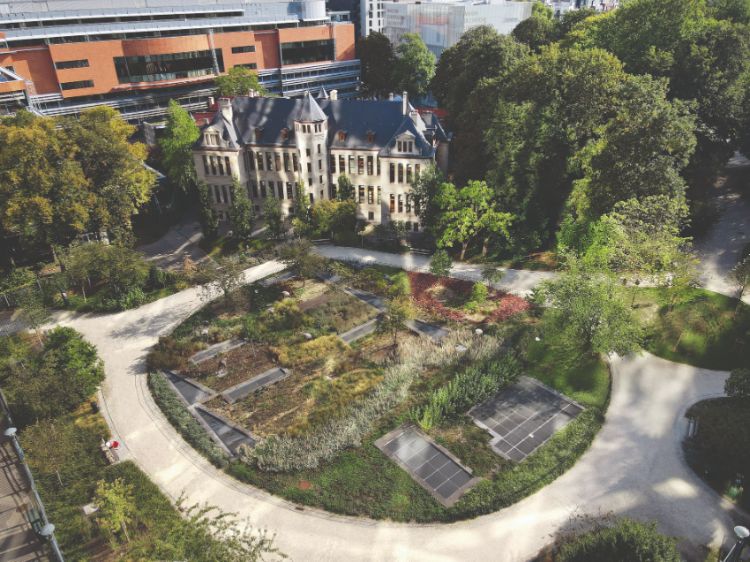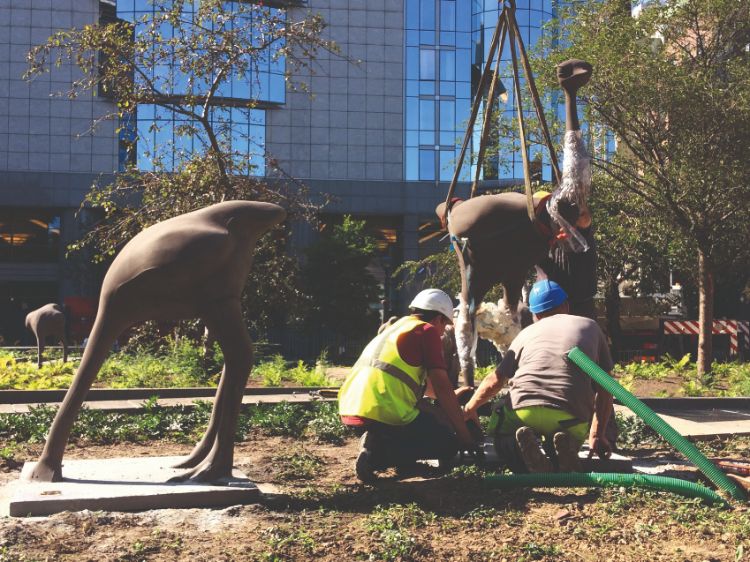A flock of ostriches with their heads buried in the ground decorate a quiet corner at the northern foot of the European Parliament’s Henri Spaak building in Brussels; only one of the eight has its head up.
“Have officials in the Belgian capital shown they can poke fun at themselves with the installation of this distinctly self-deprecating sculpture garden?” wrote a British tabloid weeks after the sculptures were completed in 2016.
The article further speculated: “The birds, surrounded by a wasteland of overgrown weeds, perhaps [are] meant to represent Europe’s response to Islamist terrorism, the migrant crisis, or the cultural destruction caused by financial stagnation and youth unemployment.”
Some parliamentary staff read a different message in the sculptures. “Parliament should be like that one ostrich that is not burying its head in the sand, but instead tackles problems head on”, said Torben David, an MEP assistant.
According to Elias Kühn von Burgsdorff, speechwriter for Commission President Ursula von der Leyen, if the sculptures can be read as a political reference to the EU, “we can say we’re learning to be the one standing upright, looking ahead. At least we need to be.”

Close-up of the ostrich sculptures. Photo: Serge Brison for MSA Architectes
Alain Simon of the Brussels-based design firm MSA was the architect responsible for the ostrich sculptures and the renovation of Leopold Park at the back doorstep of the European Parliament. He spoke to Parliament Magazine and tried to set the record straight.
First, he emphasised, these birds with their heads buried in the ground, despite being placed in the shadow of the European Parliament, were not intended as a political critique of the EU.
“As an office, we are very pro-European; we work in many projects around the European quarter, we are the children of EU commissioners, we went to European schools. We are convinced Europeans. We did not mean to make something critical at all”, Simon said.
From 2012 to 2016, MSA was tasked with the renovation of parts of Leopold Park, which sits to the east of the Brussels European Parliament complex. The aim was to improve the park’s accessibility and visibility from Parliament.
“Back then, it was difficult for people to enter the park, especially from the Parliament. There was no visible entrance, and the plants and trees were very wild. You couldn’t even tell there was a park there when you were coming from the Parliament”, Simon explained.
For the area where the ostriches are located, the aim was to open up the space and give a view to the Parliament restaurant, as well as to attract the people of Parliament into the park. The animals were chosen based on an old map the architects found of the grounds from the 19th century.

View of the garden behind Henri Spaak building spotted with ostrich sculptures. Photo: Serge Brison for MSA Architectes
The park used to be a zoo, founded in 1850, and on that very spot was an ostrich pen. However, the zoo shut down in 1877. According to Simon’s historical research, this was due to a lack of knowledge about how to treat non-native animals.
The sculptures were made for fun, Simon said, but as an afterthought, he saw the absurdity of the original zoo that inspired them: “It’s strange to think about humans taking birds from one side of the world and putting them in a cage in Belgium just to show people, and then the birds die.”
The limited spaces in which the renovations took place included the historical spots where the ostrich and penguin cages were. The penguin sculptures were built by the children’s playground, and the ostriches in the more secluded space by Parliament.
The architect and his partner, Elodie Antoine, a contemporary art sculptor who collaborated on the project, were keen on having the birds with their heads in the ground. By capturing the absurdity of the myth that ostriches bury their heads in the ground, the pair intended to pay homage to the history of absurdist Belgian sculptures.
With Belgian artists like the neo-conceptual Wim Delvoye producing controversial sculptures, or even the quintessentially Belgian Manneke Pis statue, Simon sees the mysterious placement of ostriches with their heads in the ground as a small contribution to the absurd Belgian art scene.
“When we made the model of ostriches in the ground, we thought it would be difficult for people to tell that it’s an ostrich. So, we made two molds. One to have the ostrich with the head in the ground, and one to show that it’s an ostrich.”

Installation of the sculptures in 2016. Photo: Serge Brison for MSA Architectes
Simon and Antoine made miniature clay models of the sculptures, scanned them in 3D and then reproduced them in another material with a laser. Lastly, the insides were filled with fiber cement. The process took one year.
Originally, there were 12 ostrich sculptures placed in the park when the renovations were completed. A few weeks later, vandals broke four of the upward-facing ostrich sculptures, and the remains had to be removed. This left eight birds behind, only one of which had its head above the ground. The other seven had their heads buried.
Simon said that the team at MSA, the architectural firm, was surprised at first by the political interpretation of their work, but then realised they could have seen it coming and discussed their own political interpretations afterwards.
“If anything, we would see the remaining sculptures [as] representing Europe, with its head above the ground”, said Simon.
“People can project their own interpretation onto the ostriches”, Simon reflected. “If you want to see the negative side or a criticism, you see the ostrich with the head in the ground. If you want to see the positive side, you can see the ostrich with the head out of the ground. Political action always has both sides.”
Sign up to The Parliament's weekly newsletter
Every Friday our editorial team goes behind the headlines to offer insight and analysis on the key stories driving the EU agenda. Subscribe for free here.